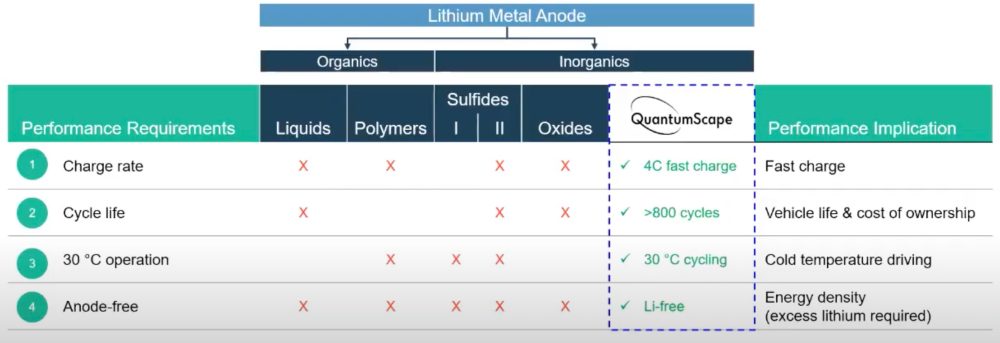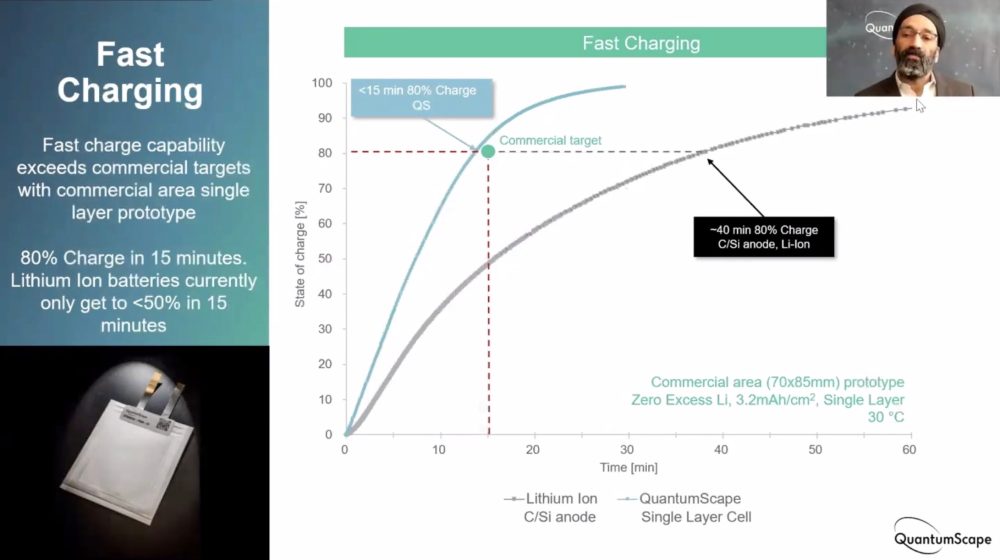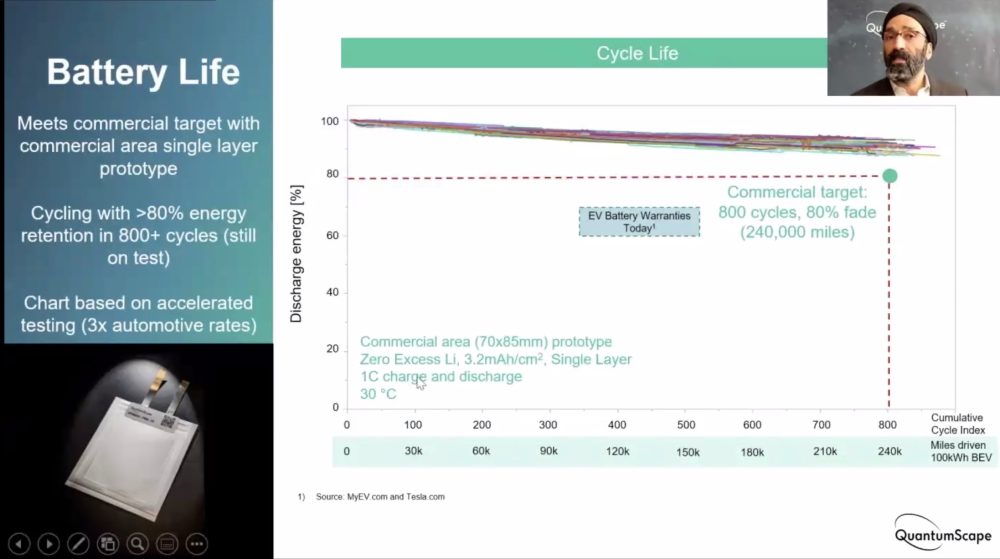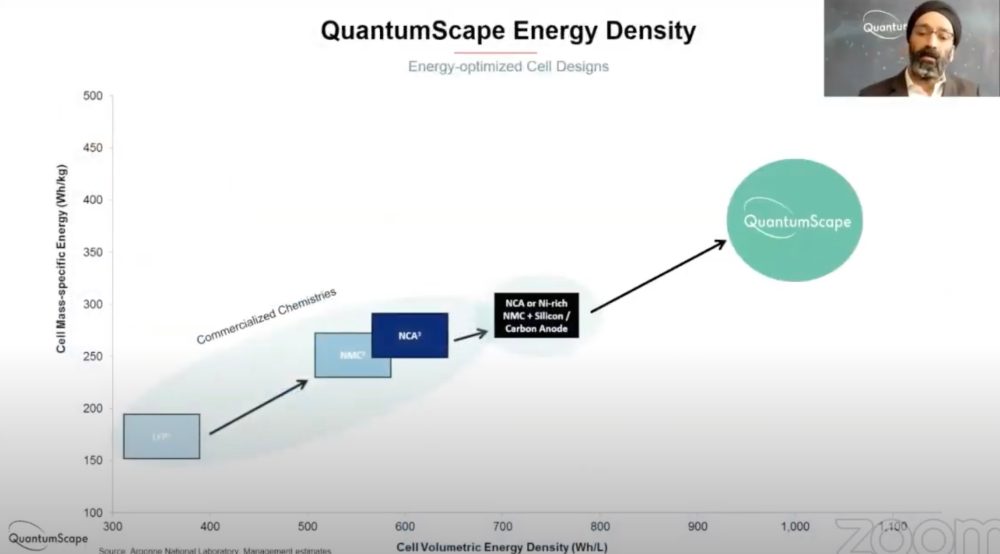
QuantumScape unveiled the data about its new solid-state battery technology today, revealing some impressive results with fast-charging and long-range capacity.
It received praise from many battery experts, including Tesla co-founder JB Straubel, who described the result as “a major breakthrough.”
QuantumScape
QuantumScape is a San Jose-based battery company founded 10 years ago by Jagdeep Singh, a computer scientist and co-founder of Infinera Corporation, a major telecom component supplier, and Tim Holme, a Stanford-educated mechanical engineer.
The short story is that they claim to have solve the solid-state battery problem.
Solid-state batteries have long been known to have the potential for higher capacity than conventional li-ion batteries with liquid electrolyte.
However, the industry has several challenges to overcome in order to make solid-state viable, and QuantumScape claims to have solved them all:

At the core of the achievement is a ceramic separator that QuantumScape has been working on for a long time.
They created the new material back in 2015 and worked on making it manufacturable at scale with a low defect rate.
Since its proprietary information, the company didn’t reveal much about the material other than it’s ceramic-based and uses four precursors that are available commodities.
What they did reveal today is the result of testing of single layer prototype cells.
The presentation was straightforward with clear results from the prototypes and targeted capacity of the commercial cells:
Battery Cell Fast Charging Capacity
They showed actual test results showing that their battery cells can charge from 0 to 80% capacity in 15 minutes:

Battery Cell Life
Solid-state batteries have often lacked in longevity, but QuantumScape has already shown that it can retain over 80% capacity after 800 cycles:

In an electric vehicle with 300 miles of range, that would result in 240,000 miles before the battery pack would start degrading below 80% its original capacity.
Battery Cell Energy Density
The company didn’t release as much data on the energy density of its cells, but like other solid-state batteries in the past, it is expected to deliver significant improvements over current Li-Ion batteries:

During the presentation, they have mentioned a potential between 50% and up to 100% improvement in volumetric energy density.
Tesla Co-Founder JB Straubel on QuantumScape
QuantumScape had several battery experts discuss the results published by the company today.
They were all very impressed by the result, including JB Straubel, who our readership is most likely going to be interested in hearing about his thoughts considering he focused on the impact on the electric vehicle market.
At Tesla, Straubel led the automaker’s effort to develop battery cells and tested virtually every battery from every supplier.
The engineer has been described as the most knowledgeable person in the world when it comes to automotive-grade battery cells.
Straubel is now really impressed by QuantumScape’s battery, which he described as “a major breakthrough”:
“The team at Tesla did an amazing job over the years optimizing inside that window to build a prototype with incredible performance, characteristics, and it’s now part of why EVs are succeeding, but all these little edge cases where the product is limited, this technology can really breakthrough that.”
The engineer, who left Tesla last year to start a battery recycling company, is particularly impressed by how Quantum solved the lithium plating problem — enabling faster charge rates and better performance at low temperatures.
Straubel added about the energy density:
“Seeing these performance numbers is almost unheard of: roughly 50% improvement in volumetric energy density is incredible when we are used to seeing single-digit percent per year and that was hard to achieve and a great outcome. Jumping to something like 50% is game-changing.”
He believes that it is going to enable new advancements in electric transportation, like electric airplanes.
What now for QuantumScape?
The work is not over.
During the presentation, CEO Jagdeep Singh was clear that they need to turn their single-layer cells into multi-layer cells and then bring those to mass production.
He didn’t want to downplay the difficulty of reaching volume production, but he believes that the problem has been solved.
The focus was on their new ceramic separator, and the chemistry eliminates the anode manufacturing, and the cathode is the same process as conventional batteries.
Nonetheless, it is going to take a few years for them to reach volume production of 20 GWh, which they plan to do through their partnership with Volkswagen by 2024-2025.
They are already fully-funded to achieve that thanks to the $1.5 billion that they raised through venture capital and recent entry in the public market.
Subscribe to Electrek on YouTube for exclusive videos and subscribe to the podcast.
Author: Fred Lambert
Source: Electrek



